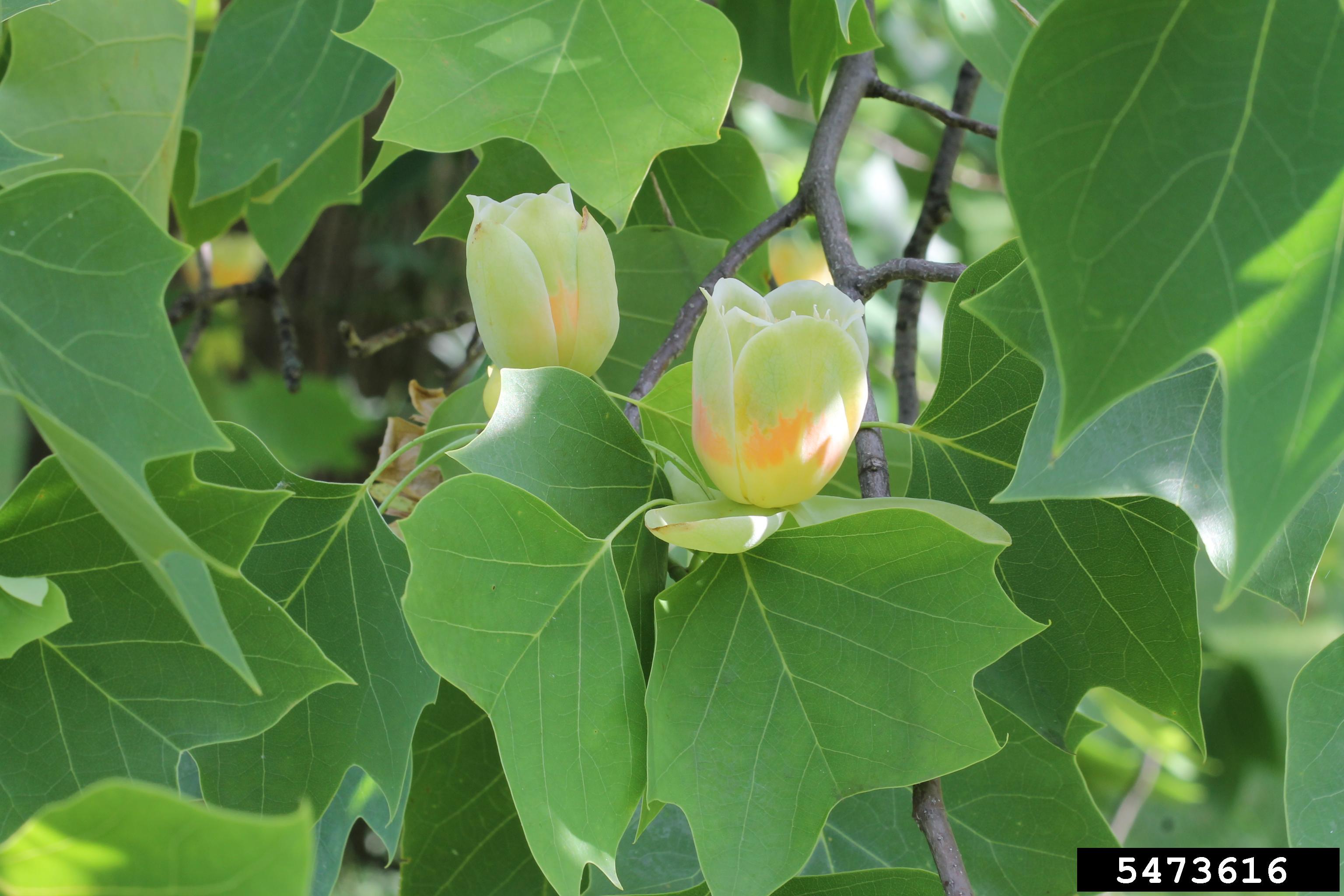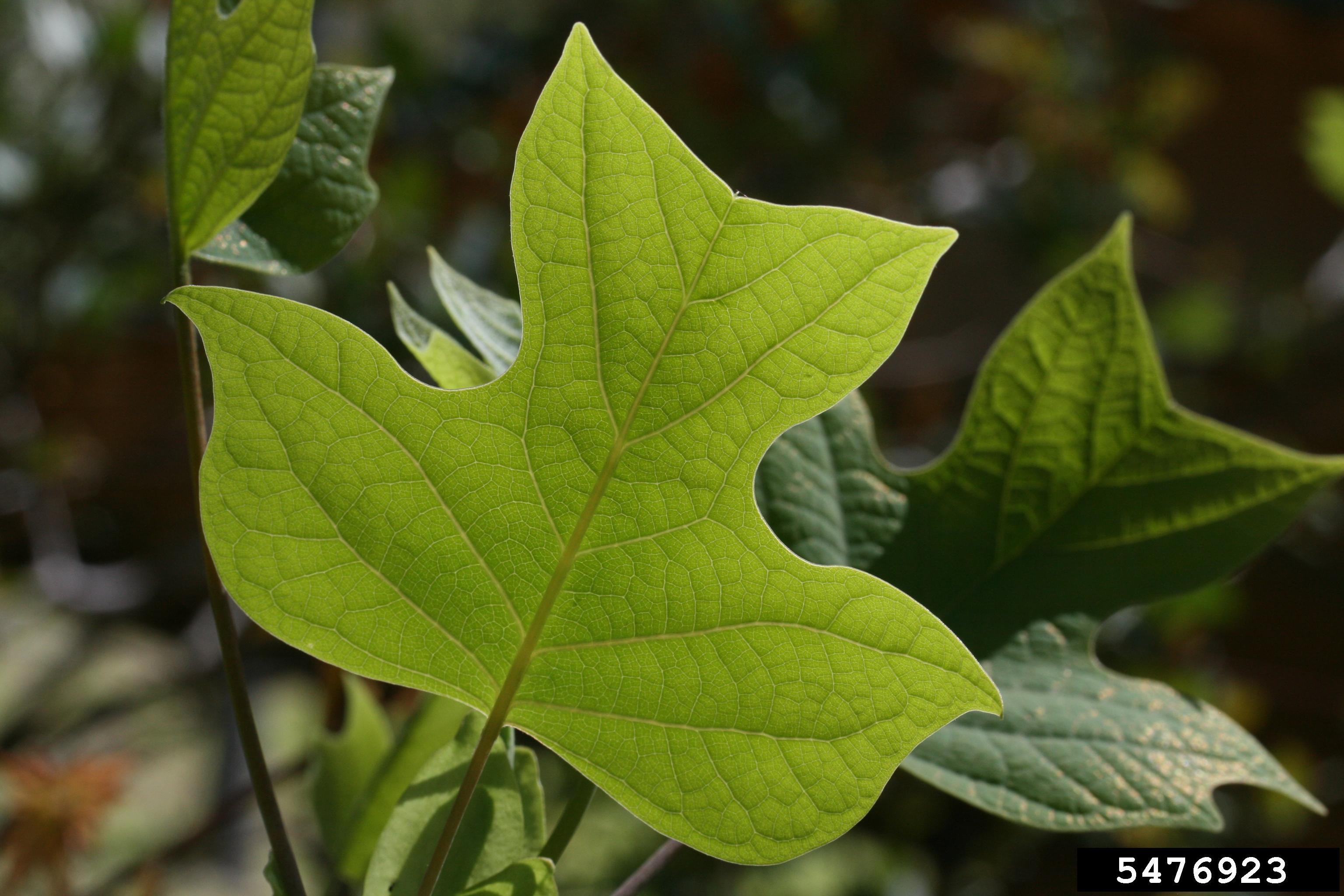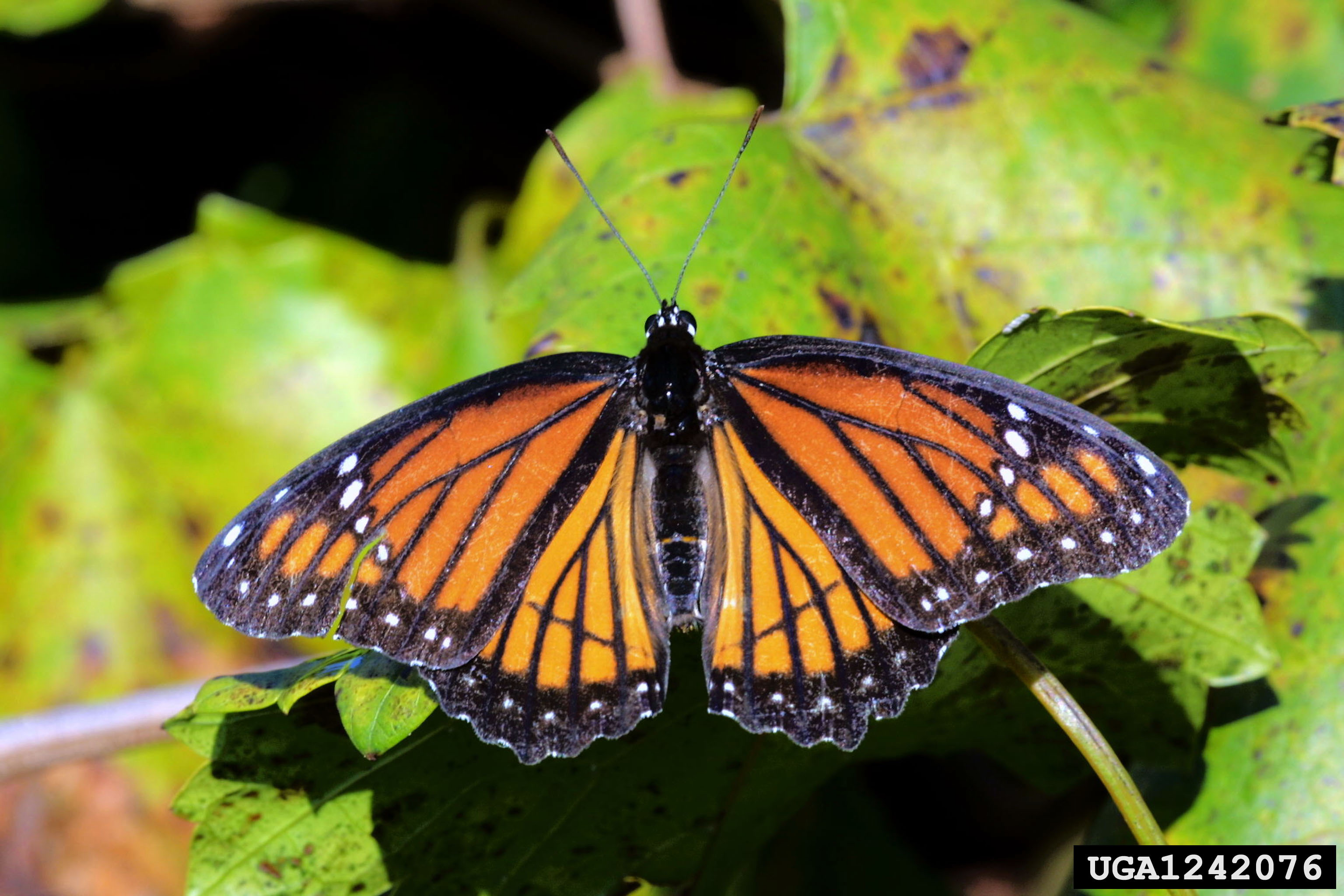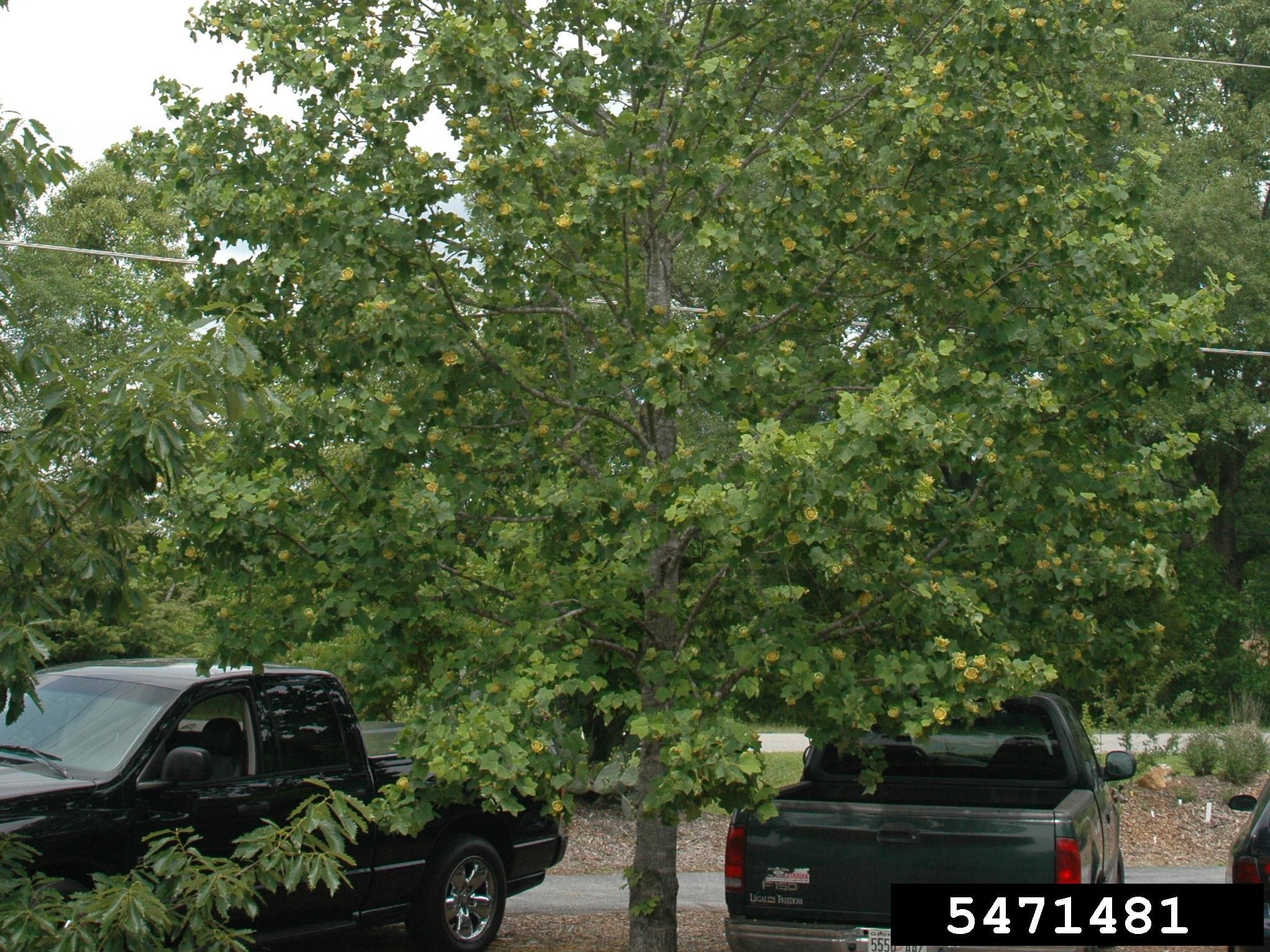Tree Highlight: Tulip poplar
Tulip poplar
Liriodendron tulipifera (Family Magnoliaceae)
The tulip tree has distinctive leaves and tulip-shaped flowers
The basics
Tulip poplar (Liriodendron tulipifera), also known as yellow poplar or tulip tree, is one of the largest trees in the eastern U.S., with a straight trunk, characteristic leaves, and beautiful tulip-shaped flowers from April to June. It is a fast-growing tree that can reach easily 100 feet in height and is often the tallest tree in the forest. It typically grows in cove forests in Appalachia, but is also found in bottomland forests and swamps throughout central and eastern United States.
Did you know?
- Tulip poplar is the state tree of Kentucky, Indiana, and Tennessee!
- Some may say that the leaves of the tulip tree are shaped like the face of a cat. Next time you see one, look closely to see if you can see it!
- Pioneers and Native Americans used the tall, straight trunks of tulip poplars to make canoes, perfect for traveling rivers and streams.
- The tulip poplar’s scientific name is Liriodendron tulipifera and means “tulip bearing tree” because of the resemblance of the tree’s flowers to tulips.
The leaf of tulip poplar is very distinctive
The viceroy, the Kentucky state butterfly, feeds on tulip poplar flowers
Wildlife
- In late fall and winter, squirrels feast on the tree's fruits, storing up food for the colder months.
- Deer can feed on the twigs, especially when other food is scarce.
- The nectar from the tulip poplar is a very important food source for the ruby-throated hummingbird, which, while feeding, helps to pollinate the flowers.
- The tulip tree is important for insects. Yellow poplar weevils consume the leaves, and butterflies, including Kentucky’s state butterfly, the viceroy, feed on the flower’s nectar.
Uses
- Because of its prevalence and growth characteristics, the tulip poplar is considered one of the most important timber species in Kentucky.
- The wood of the tulip poplar is light and easy to work with, making it perfect for creating furniture, cabinets, and even musical instruments.
- Tulip poplar bark can be used as a tea ingredient used to help with fevers and other illnesses.
The tulip poplar is an important timber tree but also a favorite ornamental in streets and parks
Benefits
- Over a 20-year period, a healthy tulip poplar with a diameter of 25 inches will offset 13,889 car miles worth of CO2, absorb enough stormwater to fill 2,258 bathtubs, and remove an amount of pollution from the air - in gaseous and particulate form - equivalent in weight to 182 smartphones! Learn more at: https://mytree.itreetools.org/
Tulip poplar Tree of the Week video
By University of Kentucky Forestry and Natural Resources Extension.
Click to watchContact us: ufi@uky.edu
Images sourced from forestyimages.org





